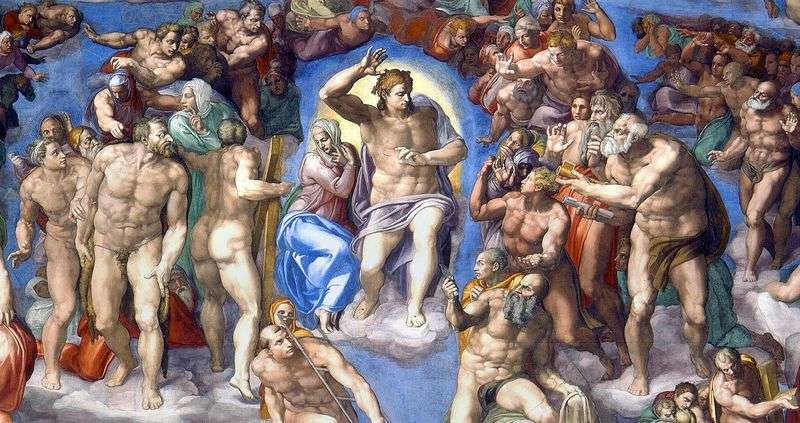
Fragment of the fresco by Michelangelo Buonarroti “Last Judgment”. The size of the painting is 1370 x 1220 cm. In 1534 Michelangelo moved to Rome. At this time, Pope Clement VII pondered the theme of the fresco painting of the altar wall of the Sistine Chapel.
In 1534 he settled on the theme of the Last Judgment. From 1536 to 1541, already under Pope Paul III, Michelangelo worked on this huge composition. Before the composition of the Last Judgment was built from several separate parts. In Michelangelo, she is an oval whirlpool of nude muscular bodies. The figure of Christ, resembling Zeus, is located above; his right hand is raised in a gesture of curse to those to his left. The piece is filled with a powerful movement: the skeletons rise from the ground, the rescued soul climbs up the garland of roses, the man whom the devil drags down, in horror covers his face with his hands.
The Last Judgment fresco is a reflection of Michelangelo’s growing pessimism. One detail of the Last Judgment testifies to the gloomy mood of the artist Michelangelo and represents his bitter “signature”. At the left foot of Christ is the figure of St. Bartholomew, holding his own skin in his hands.
The features of the saint are reminiscent of the Roman writer and humanist Pietro Aretino, who passionately attacked Michelangelo because he considered his interpretation of the religious story indecent. The face on the skin of St. Bartholomew is a self-portrait of the artist. Notes of tragic despair are amplified in the painting of the chapel by Paolin in the Vatican, where Michelangelo painted two frescoes – “Paul’s Conversion” and “Crucifixion of Peter”.
In the Crucifixion of Peter, people in a daze look upon the martyrdom of the apostle. They do not have the strength and determination to resist evil: neither Peter’s angry gaze, the image of which resembles the Last Judgment martyrs demanding retribution, nor the youth’s protest from the crowd against the actions of the executioners can not bring viewers frozen in immobility from a state of blind submission.
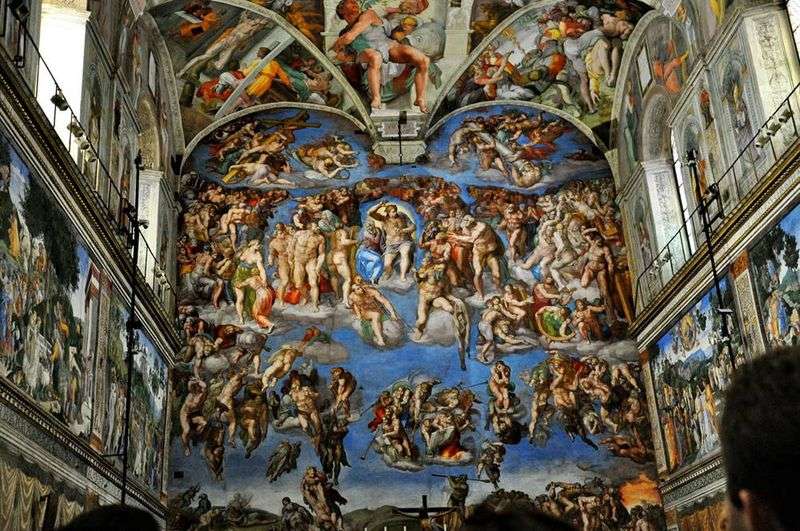 The Last Judgment by Michelangelo Buonarroti
The Last Judgment by Michelangelo Buonarroti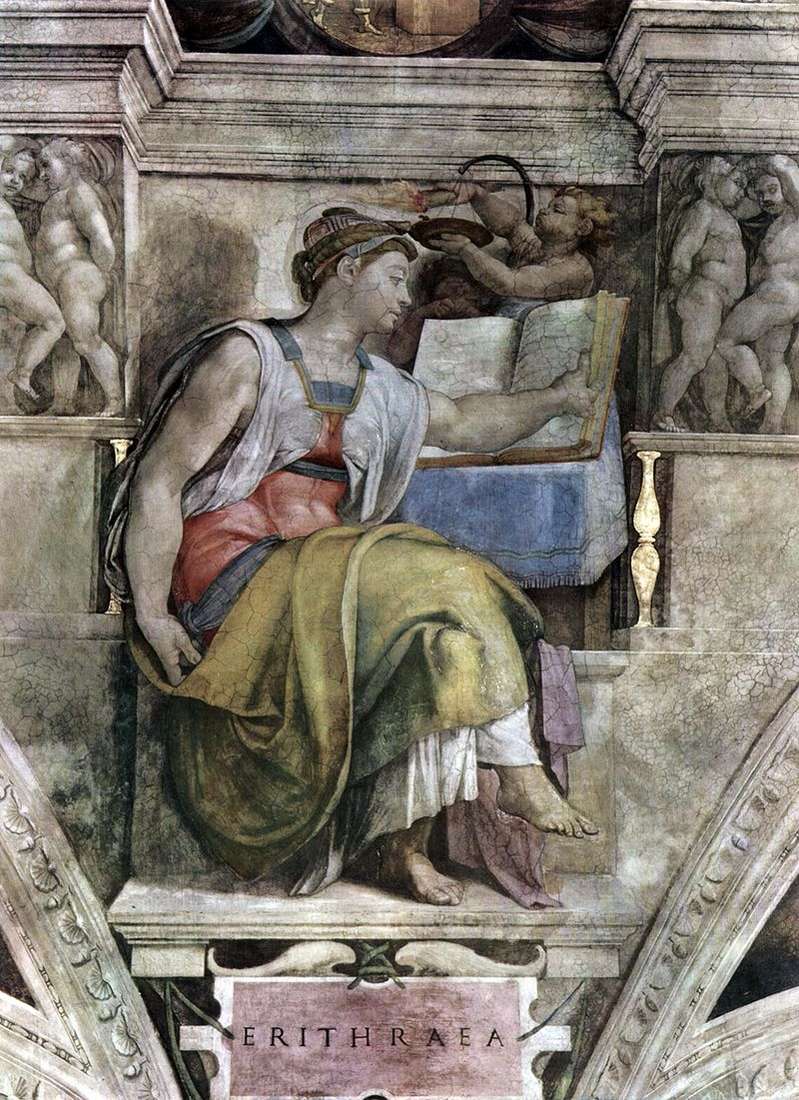 Eritrean Sibyl (fresco) by Michelangelo Buonarroti
Eritrean Sibyl (fresco) by Michelangelo Buonarroti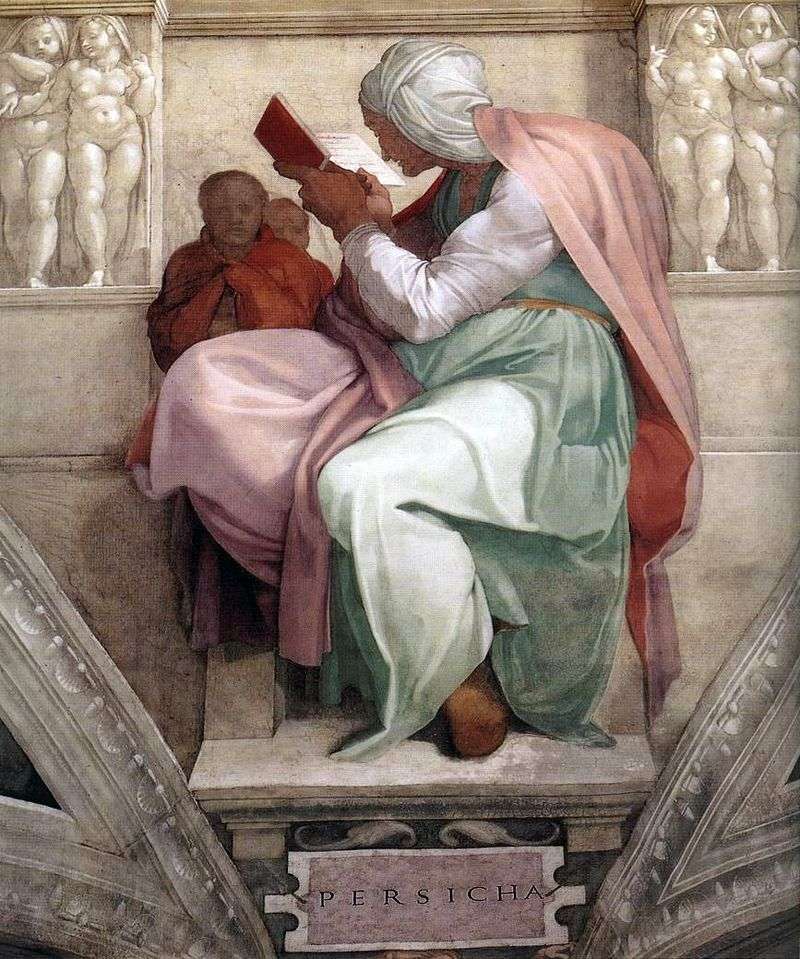 Persian Sibyl (fresco) by Michelangelo Buonarroti
Persian Sibyl (fresco) by Michelangelo Buonarroti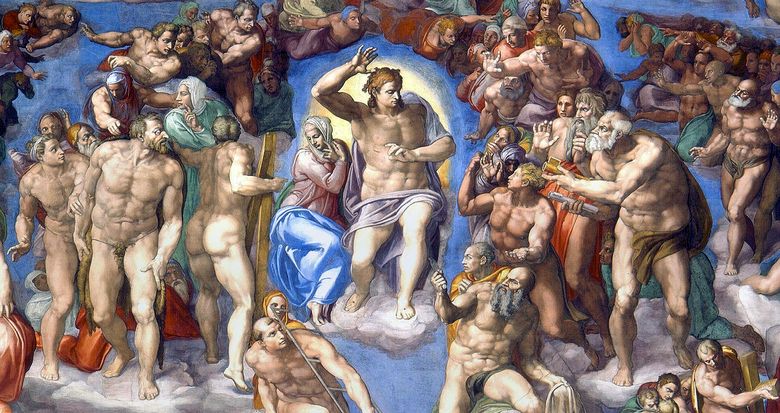 L’image du Christ sur la fresque Le Jugement dernier – Michelangelo Buonarroti
L’image du Christ sur la fresque Le Jugement dernier – Michelangelo Buonarroti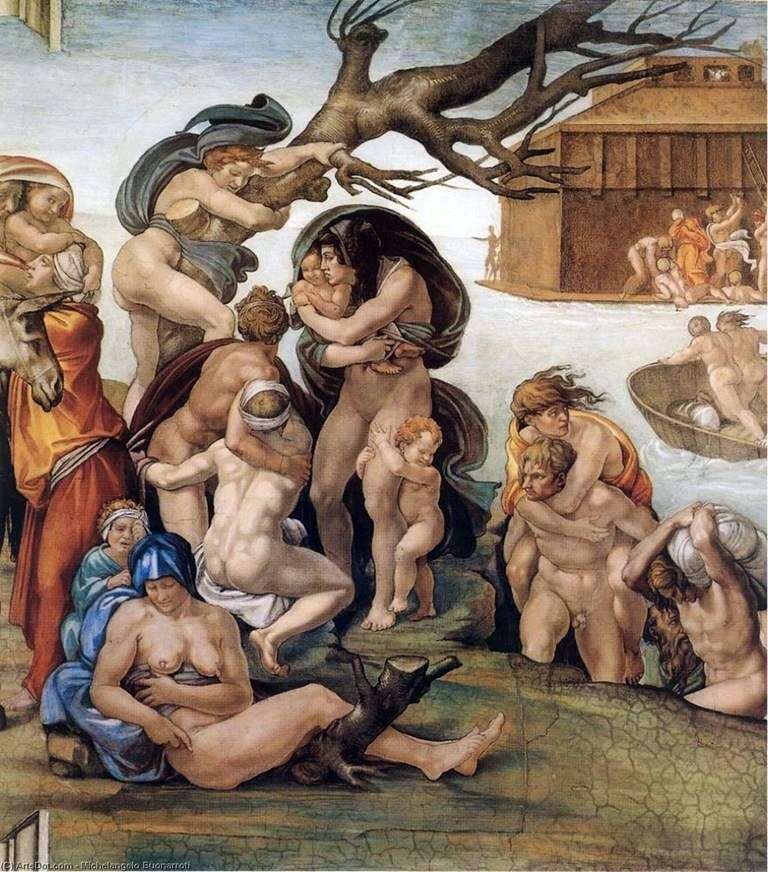 Flood, a fragment of the painting of the Sistine Chapel (fresco) by Michelangelo Buonarroti
Flood, a fragment of the painting of the Sistine Chapel (fresco) by Michelangelo Buonarroti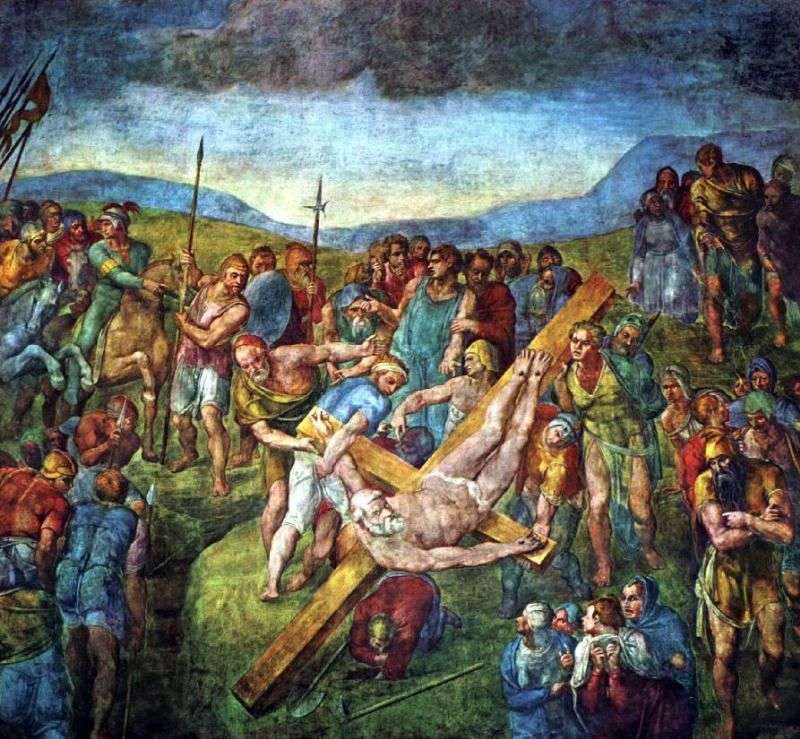 Crucifixion of St. Peter by Michelangelo Buonarroti
Crucifixion of St. Peter by Michelangelo Buonarroti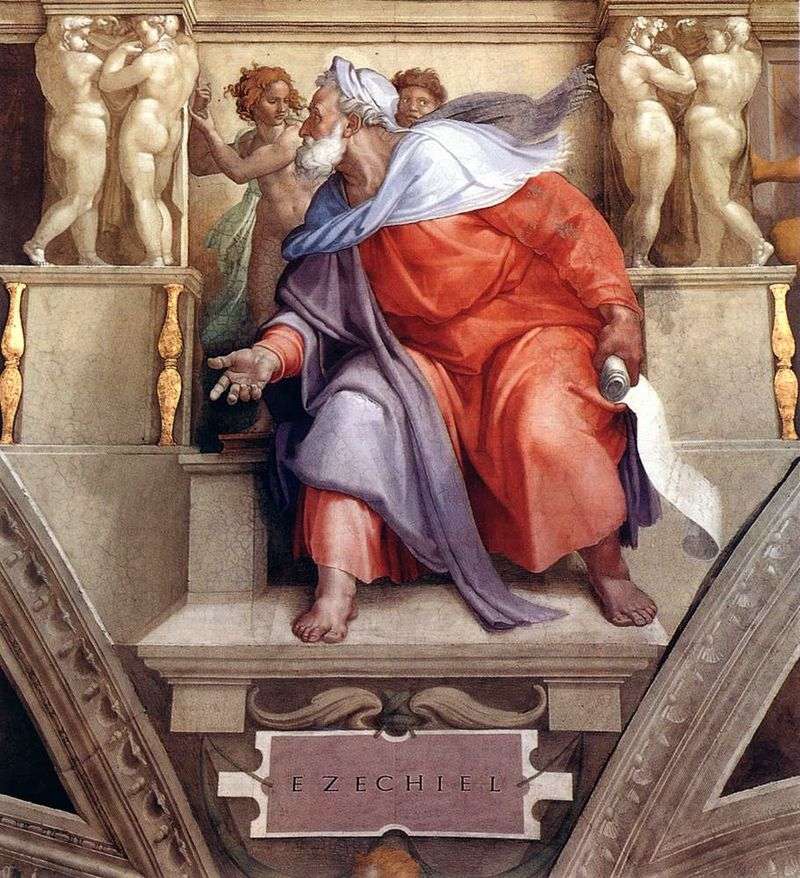 The Prophet Ezekiel (Fresco) by Michelangelo Buonarroti
The Prophet Ezekiel (Fresco) by Michelangelo Buonarroti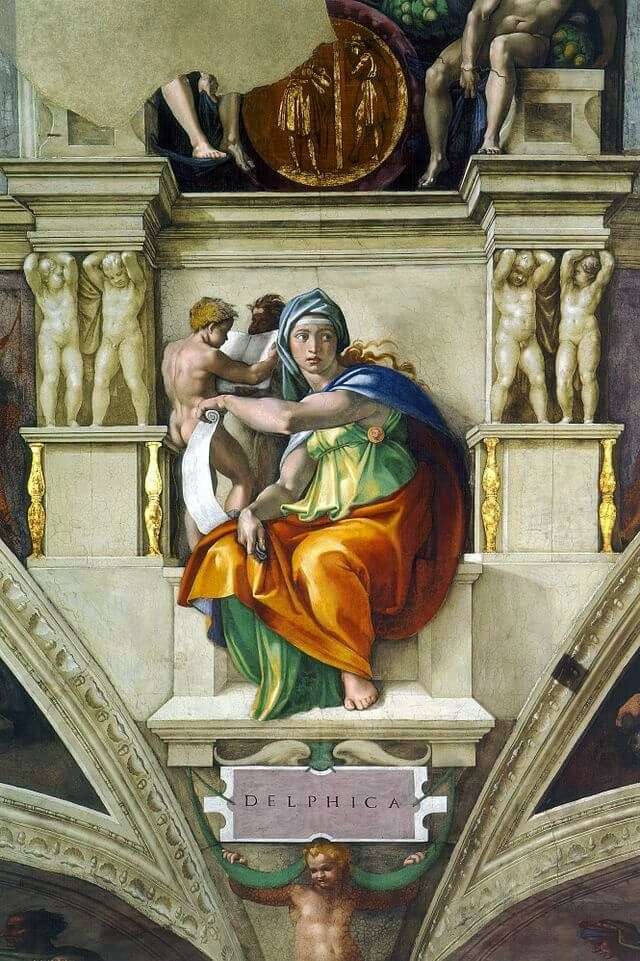 The Delphic Sibyl by Michelangelo Buonarroti Buonarroti
The Delphic Sibyl by Michelangelo Buonarroti Buonarroti